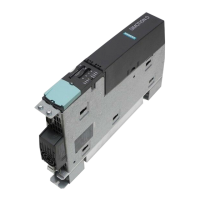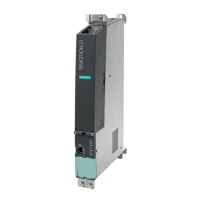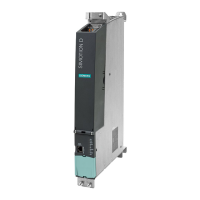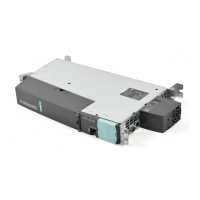Supplementary system components
6.2 Fan/battery module
SIMOTION D4x5-2
84 Manual, 11/2010
Replacement during POWER ON
The fan/battery module should preferably be replaced in the POWER OFF state.
In principle, replacement during POWER ON is possible, but the following aspects must be
taken into consideration:
● If the fan/battery module is disconnected and heat dissipation is required because of the
temperature conditions, a fan fault is signaled (fan fault is signaled via system variable,
PeripheralFaultTask and diagnostic buffer entry; if no PeripheralFaultTask is configured,
the control unit switches to STOP mode)
● With the D445-2 DP/PN and D455-2 DP/PN, the control unit switches to the RESET
mode after approx. 1 minute when a fan fault occurs in order to protect itself
● During the replacement, the missing fan and battery is signaled via the system variables
fanbattery.fanexisting and fanbattery.batteryexisting.
WARNING
The fan/battery module should only be replaced when the CPU is in STOP mode so that
there is no risk of an unintentional failure of the machine/plant.
The causes of an unintentional failure can be, for example:
● No PeripheralFaultTask has been configured; if no PeripheralFaultTask is configured, the
control unit switches to STOP mode when a fan fault occurs
● A delayed replacement can result in a RESET mode
● Cables may be unintentionally disconnected during the replacement
Rules for handling backup batteries
WARNING
Improper handling of backup batteries can lead to a risk of ignition, explosion and
combustion. The regulations of DIN EN 60086-4, in particular regarding avoidance of
mechanical or electrical tampering of any kind, must be complied with.
● Do not open a battery. Replace a faulty battery only with the same type.
● Only use a replacement from Siemens (see Section Available spare parts and
accessories (Page 113)).
● Always try to return old batteries to the
manufacturer or deliver thes
e to a registered
recycling company.
For information on shipping and storage of backup batteries, see Section Shipping and
storage conditions.
See also
Shipping and storage conditions (Page 63)

